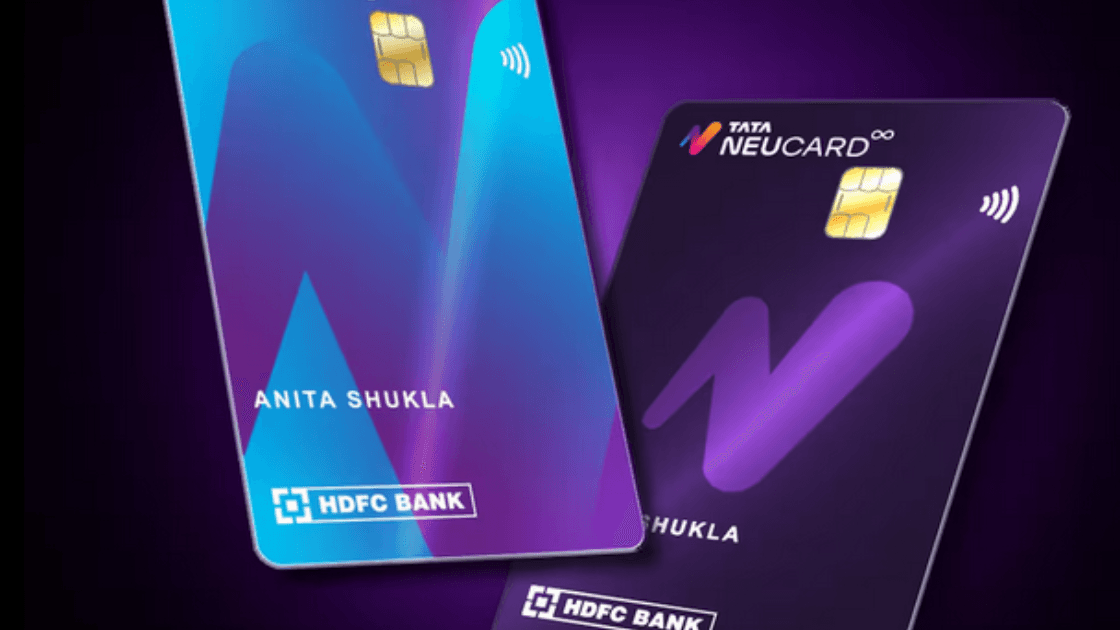
Cards
•04 min read

Contactless payments are rapidly becoming the norm in India. With the ease of a simple tap, transactions are processed within seconds, making the experience smooth and hassle free. This blog provides a clear explanation of how contactless credit cards work in India, exploring the technology, benefits, security features, and practical tips for getting the most out of these modern payment methods.
Contactless payments use advanced technology like NFC (Near-Field Communication) and RFID (Radio Frequency Identification) to complete transactions quickly. Instead of swiping or inserting your card, you simply tap it on a terminal. For small amounts, the system does not require a PIN, streamlining the process even more. This method enhances convenience by reducing the need to handle cash or physically interact with the terminal.
In daily life, contactless credit and debit cards are used at various locations such as retail stores, metro stations, and toll booths. Additionally, mobile-based payment systems like Google Pay and Apple Pay have adopted contactless-tech, allowing users to pay by simply tapping their smartphones or wearables at compatible payment terminals. Such examples showcase the widespread application of contactless payments in everyday transactions in India.
The process of a contactless transaction is simple and efficient. When you tap your credit card near the payment terminal, the following occurs:
The terminal reads a unique cryptographic code generated by the card.
This code is securely transmitted for verification.
Your card issuer checks the transaction for any suspicious activity.
Once verified, the transaction is approved, and the payment is processed.
This step-by-step flow illustrates the speed and simplicity of contactless payments which are often completed within seconds.
According to guidelines introduced by the Reserve Bank of India, transactions made using contactless methods are generally capped at ₹5,000 per transaction without a PIN. These limits serve as an additional safety measure while preserving the convenience of making quick payments.
The technology supports a wide range of devices. Smartphones running on both Android and iOS, as well as wearables and updated POS terminals, are equipped to handle contactless transactions. For example, many users in India take advantage of platforms like Amex Tap and Pay for Android to quickly settle their bills.

The most significant benefit of contactless payments is their speed. With no need to swipe, insert, or enter a PIN for smaller transactions, users find that the process is remarkably smooth. In busy environments such as supermarkets or on public transportation, this speed can greatly enhance the overall experience.
Particularly in times when hygiene is of utmost importance, contactless payments offer a safe alternative by minimizing physical contact between the user and the terminal. This has proven beneficial during health crises and seasonal outbreaks, making payments not just convenient but also safer.
Security is a key focus in contactless technology. The encryption and tokenization protocols used ensure that sensitive cardholder data is protected. Each transaction uses a unique code, drastically reducing the risk of unauthorized duplication or skimming, and reinforcing the safe use of these cards.
Some users worry about accidental payments or the possibility of multiple charges occurring when a card is held near a terminal. However, the system is designed to process only one transaction at a time, preventing any issues related to unintended payments.
Another area of concern is the risk associated with lost or stolen cards. Although contactless transactions typically involve small amounts due to the set limits, there is potential for misuse if a card falls into the wrong hands. This is why vigilance is key.
To enhance safety, cardholders should take practical steps like regularly monitoring their transaction history and setting up SMS or email alerts for every transaction. Additionally, using an RFID-blocking wallet can help prevent any unauthorized scanning of card details, thereby adding an extra layer of security.
Identifying a contactless card is easy – look for the familiar wave or contactless symbol. Once you have a Tata Neu HDFC Bank Credit Card with contactless capability, using it at a POS terminal involves simply holding the card close to the terminal, waiting for the confirmation beep or light, and you’re done.
-ed507771-df04-4fb3-9af5-bae11cb611a6.png&w=3840&q=75)
Using contactless payments for everyday small transactions can save you time. Pairing your contactless card with rewards programs available through Tata NeuMoney can add further value. These rewards, in the form of NeuCoins, help you save on future spending, making each transaction beneficial in more ways than one.
The evolution of contactless payments is ongoing. In the future, you may see the integration of biometric authentication or further innovations in wearable payment devices. The adoption of these technologies is expected to expand beyond metropolitan areas to include rural and semi-urban regions, marking a significant shift in India’s digital payment landscape.
A contactless transaction allows you to make payments by simply tapping your debit card near a compatible payment terminal without the need for a PIN for smaller amounts.
Transaction limits are set by the RBI and generally allow payments up to ₹5,000 per transaction without requiring a PIN.
Tap and pay credit cards use NFC technology. When you tap your card near a payment terminal, it quickly communicates with the system and completes the transaction in a secure manner without a PIN for small amounts.
Yes, they are secure. The use of encryption, tokenization, and unique transaction codes makes it difficult for unauthorized users to intercept your information.
The main concerns are the potential misuse of lost or stolen cards for small transactions, a risk that can be minimized by quickly reporting a lost card and monitoring transaction alerts regularly.
Contactless payments stand out as an effective and modern way to conduct daily transactions with ease and security. Understanding the technology and process behind these payments helps build confidence in using them. With added benefits such as reduced physical contact and quick transaction times, contactless credit cards are a strong ally for day-to-day financial activities in India. Being aware of the limits and potential risks, while adopting safety measures like monitoring alerts and using RFID-blocking wallets, ensures that you can enjoy the convenience without worry.